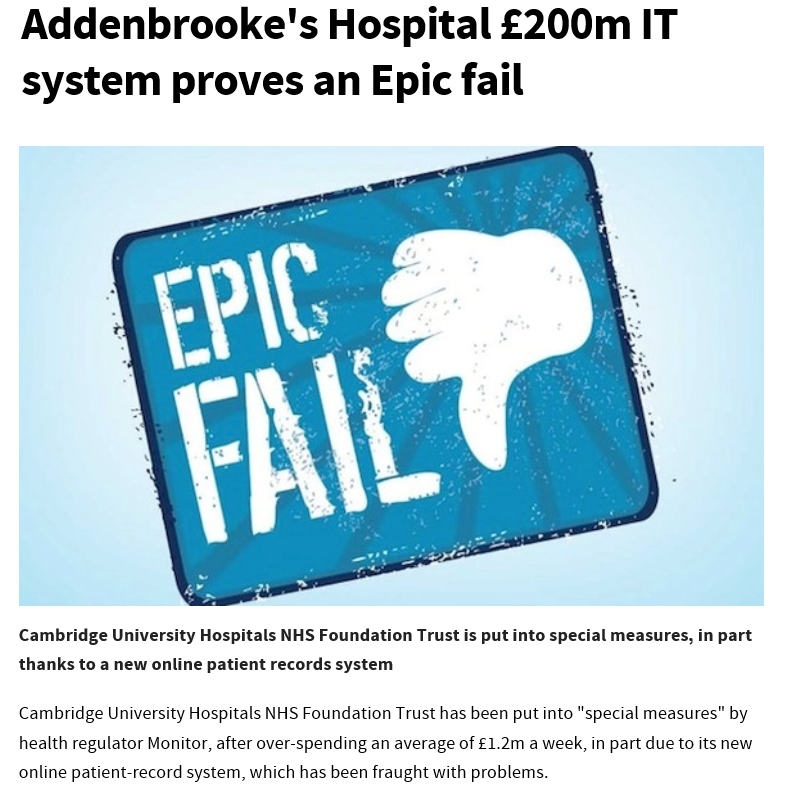Do you want to be a hen or a pig?
A hen and a pig, both entrepreneurs, decide to go into the breakfast making business. The hen supplies the eggs. The pig supplies the bacon. What is the difference between the two? The hen is involved. The pig is ‘committed’. Traditional EMR pricing, with large upfront licence fees, can leave one feeling a bit like the pig. Not only committed but ‘over committed’.
One line summarises the major problem with traditional EMRs but specifically the problem when looking at pricing for an EMR.
‘The steep price of EHR and provider uncertainty, regarding the value they will derive from adoption in the form of return on investment, has a significant influence on EHR adoption’. https://en.wikipedia.org/wiki/Electronic_health_record.
Traditional EMR vendors want you to commit to large perpetual licences. They want you to be the pig. Surely there has to be a better pricing option? An option where the Hospital takes less risk by sharing it with the vendor, and both can share in the reward. One where the vendor is actually incentivised to get the hospitals EMR up and running quickly, taking months not years.
In this article we are going to discuss what would appear to be a blindingly simple concept, associating price with value, or utilising a consumption based model, a concept that Vitro is at the forefront of.
What is consumption based pricing?
A consumption based model is one in which hospitals pay according to the quantity of services that they use or consume. In a hospital EMR setting this could be for example, a set fee per patient attendance, per patient episode, or indeed per annual file maintenance.
The actual price will be defined by both parties but will typically be driven by the value / cost savings derived from introducing the EMR. One hospital quoted the cost of buying in the paper file as €2.50 per record, this doesn’t factor in any archiving and retrieval costs which can then multiply the price by a factor of 10.
Who is using consumption based pricing?
While new to the EMR sector, utility companies have been using the consumption based model for years. Increasingly customers are moving from CAPEX (Capital expenditure) to OPEX (Operating expenditure) models. All of the big technology companies including; Microsoft, Apple, Cisco and Adobe have embraced consumption pricing. To this point however there has been a notable lack of adoption by Healthcare vendors in the EMR space.
IDC research predicts that usage-based software pricing models will be an option for 80% of applications by just 2017.
Is traditional pricing that bad?
Below is an extreme example, but a good one nonetheless, of what can go wrong. To be clear, one cannot blame traditional pricing for this problem but a consumption based model would most likely have shifted the risk ratio more in favour of the hospital.

Source; www.computing.co.uk/ctg/news/2427100/addenbrookes-hospital-gbp200m-it-system-proves-an-epic-fail
Consumption based pricing - What is in it for me?
-
A risk sharing approach where your vendor is incentivised to look after your interests and get the EMR up and running ASAP
- A predictable pricing model that ideally can be self-funding
- Ability to spread the cost over time and avoid a major one-time expense
-
The ‘risk to value’ ratio is now more balanced. The decision making process to procure an EMR tends to be much quicker, in certain cases reducing the time from what can be typically 18 months, to less than 6.
Too good to be true?
Ok, this sounds great but what is the downside? The key to ‘watch out’ for is future demand, and there are a number of answers to this.
- The ‘value driven’ nature of the model allows healthcare organisations to build the pricing model to be self-funding i.e. costing less than the typical current paper record. Healthcare organisations can then add on top all of the benefits of having an electronic medical record.
-
In many cases, and depending on the business model, the modest nature of the individual fees can allow the cost to be passed through to the patient as a small co-payment or administration charge.
- Also, good forecasting but more importantly, building in time breaks into the contract, will minimise this risk. e.g. a three year contract with a break after year three allows the pricing to be reviewed and revised if appropriate.
-
What is important, is that vendors can offer pricing flexibility, there may be certain cases when clients have a ‘budget’, in which case it may be preferable to fund the EMR from CAPEX.
What do I do next?
If you would like to discuss any items raised in the article, please contact pmooney@slaintehealthcare.com or your local Sláinte Healthcare representative.
Paul Mooney - Business Development Director ROW, Sláinte Healthcare
Paul is a former Vice President of International Sales with DenMat, Director of International Marketing with Allergan and Senior Director of International Marketing with Mentor Corporation.
LinkedIn: https://ie.linkedin.com/pub/paul-mooney/7/b39/101
EMAIL PAUL